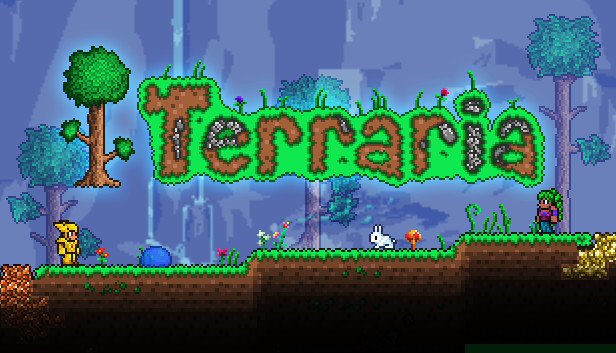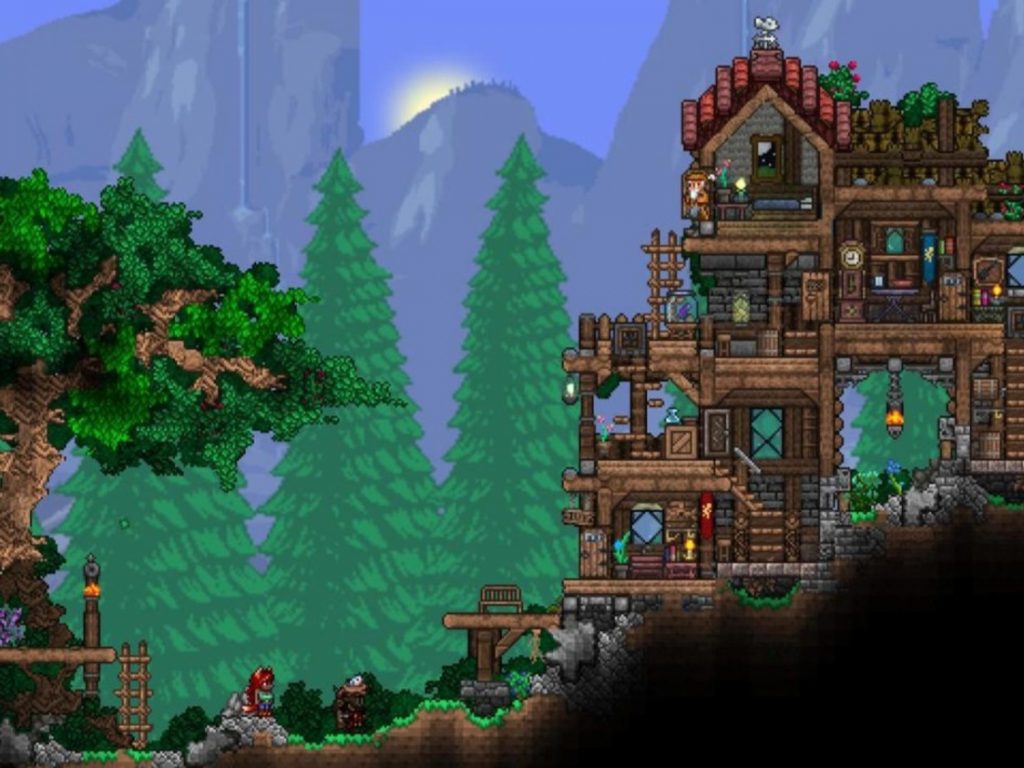
Terraria is not a survival game
Imagine what Minecraft might have looked like if it had been created with pixel-art sprites and released in the SNES era. It captures the general atmosphere of Terraria very well… This crafty little indie toy borrows so many ideas from the top game that it’s essentially Minecraft in 2D. But it also enhances the familiar gameplay in an engaging way.
Character moments
There are still plenty of nasty things to clean up, and a staggering number of trinkets that can be turned into deadly MacGyver weapons to kill enemies, Other than that it’s just plain entertaining enough.
After the user finishes customising their sprite character, Terraria drops them onto the colourful surface of a randomly generated pixel world with only a handful of tools and a vague sense that they have to create things, explore the area and fight monsters.
Figuring out exactly how to do this is a little baffling at first. There’s a lone guide roaming the surface. However, it doesn’t take long to get the gist of it. While there are no real story elements or epic quests to conquer, the strong fantasy trappings evoke a desire for adventure.

Gameplay
Magic, monsters and mayhem await both on the surface and in the dark caverns below. The discovery of unexpected new prizes and dangers make the game particularly appealing. The entire game world can be destroyed, and by smashing blocks, you can collect basic resources such as stone, wood and iron, which can be used to create cool gear or buildings.
Rarer resources are dropped when the player kills skeletons, hovering fanged creatures and other monsters, or delves into the underworld. Because so much of Terraria’s gameplay revolves around finding various components and seeing what can be built with them, the urge to explore every nook and cranny of the landscape arises immediately.
But it’s important to temper your desire to go exploring in the hope of gathering massive amounts of loot with the urgent need to build a shelter and expand your home base. Life on the surface follows a day/night cycle.
Features
Exploring the surface during the daytime is safer – you can pick flowers, wander around, cut down trees and kill weak slimes that wander too close. It’s also an ideal time to build houses, which serve as shelter and attract useful NPC characters to the settlement. As night falls, things get dicey. Hordes of zombies and creepy beasts come out in droves, forcing you to fight or flee. This isn’t a problem once the rugged settlement kicks in.
Users can assemble simple shacks or build elaborate fortresses that rise to the heavens. Either way, you need to decorate enough equipment to lure NPCs into the village. These support characters can heal, sell items and offer other useful services. The player must complete a certain task to attract them. Even then, they only appear if a room is created for them (with walls, furniture, lighting, etc.). This gives some tangible incentives to spend time building, apart from the desire to rule a large fortress.
